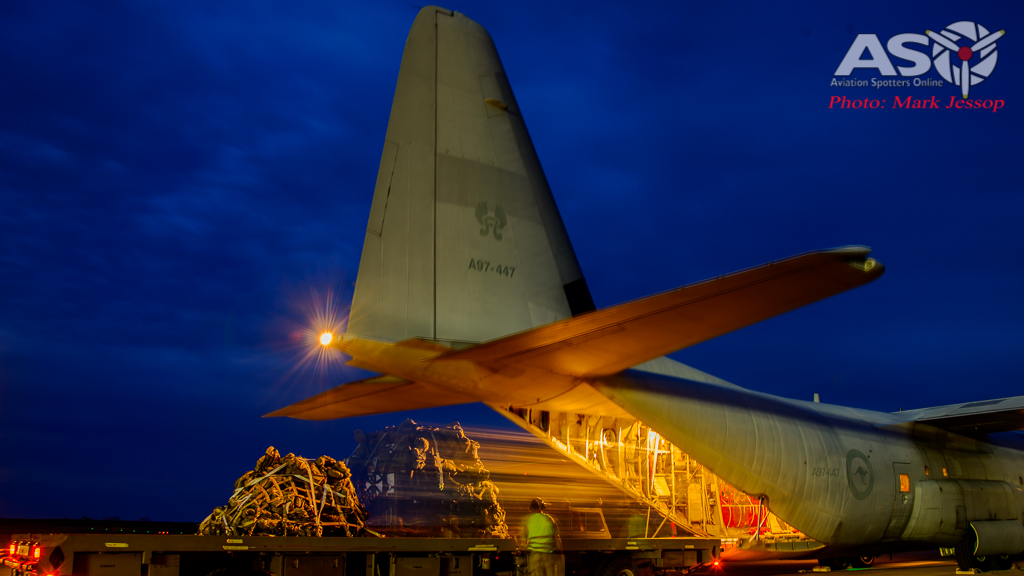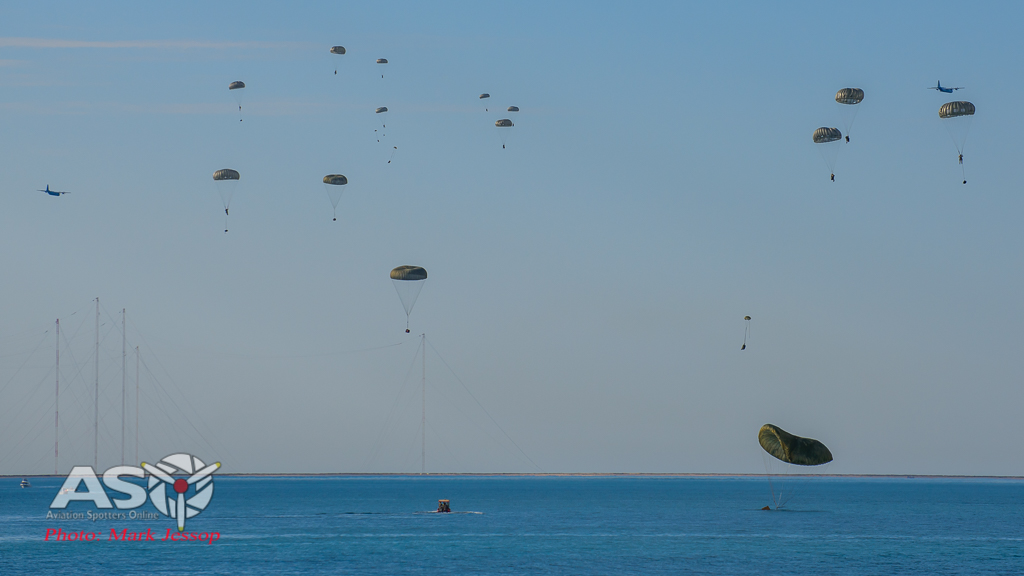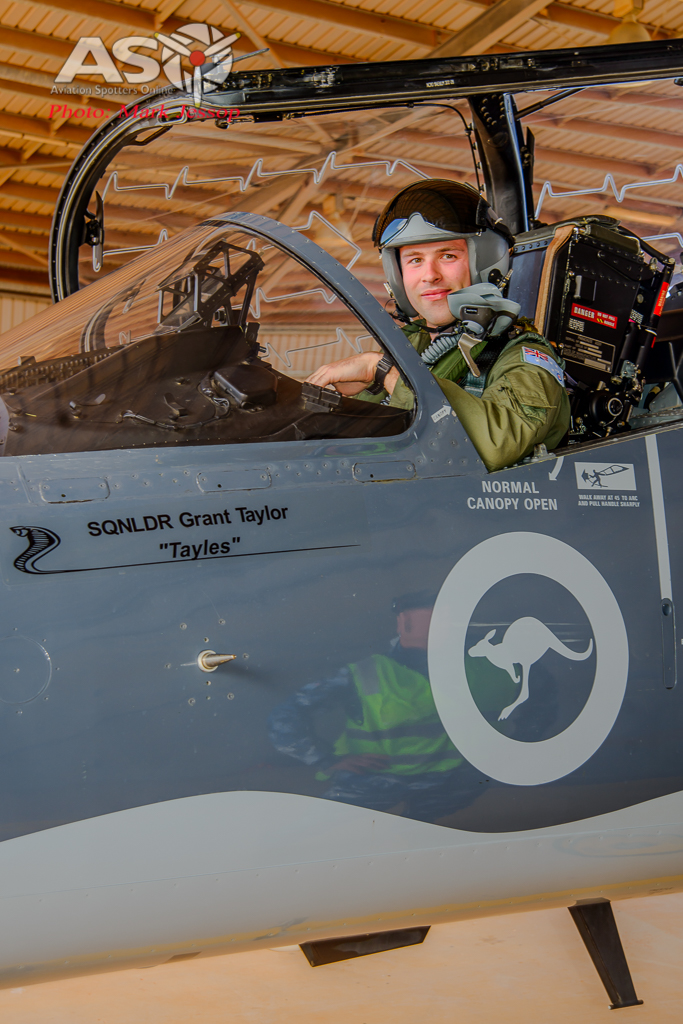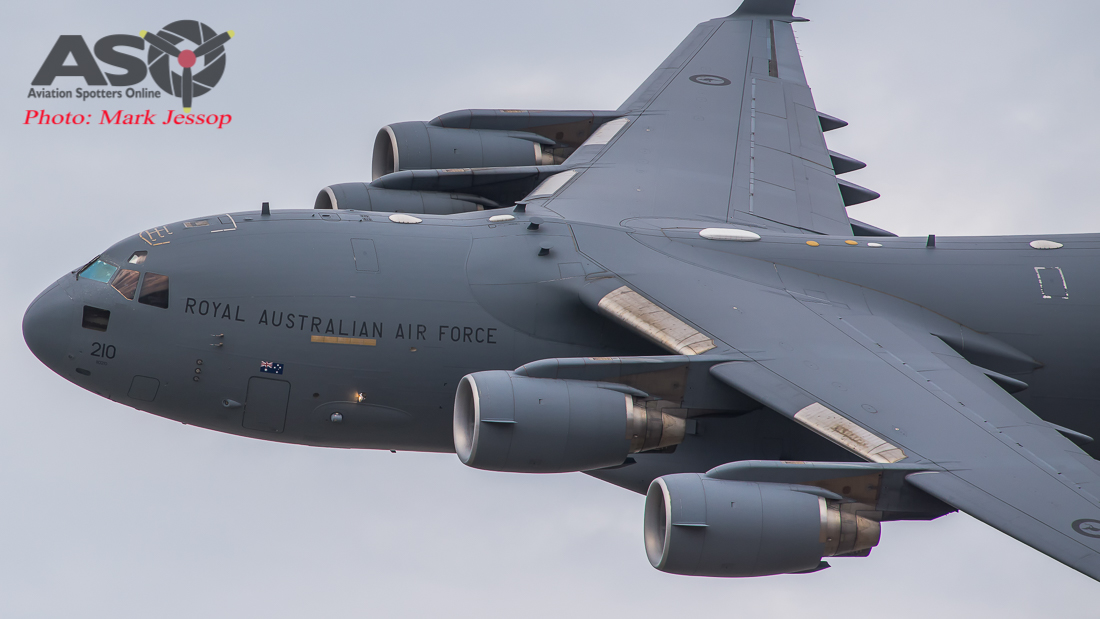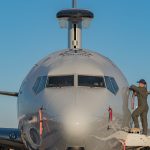Exercise Northern Shield 2015
Day 1
Have you ever wondered ” What is it like to be this close to a Fire fight ? “
Day 2. Sunday.
Day 3 Monday.

Flying Officer Jess from 79SQN doing the pre-light checks.

Flight Lieutenant Vic and Flying Officer Jess from 79SQN.
Once the Hawks had taken off for the mission ASO was given the chance to interview LTCOL Richard Niessl , Chief of Staff, Joint Task Force and WGCDR Jeff Howard, Commanding Officer Contingency Response Squadron, here is an extract from the interview.
ASO: What roles do your units play in the operations as a whole ?
LTCOL Niessl: ” What we have on the ground at the moment is the Joint Task Force and we have supporting the Joint Task Force the Contingency Response Squadron which has established at RAAF Learmonth to enable the Joint Task Force to move into the area and conduct operations from this facility. The JTF is responsible for not only projecting into the Exmouth area but also setting and improving security following a fictitious hostile act that has occurred in the area.”
ASO: How many men and women do you have for this Exercise ?
LTCOL Niessl : “There is about 400 within the JTF but then in support of the JTF the CRS has around 130 and then in addition to that all the aircraft that are flying so another few hundred in support of them. So talking about just under 1000 personal for the exercise.”
ASO: What type of equipment are you using for these tasks ?
LTCOL Niessl : ” From a JTF perspective, the JTF task Force comprises 4 different task groups underneath the HeadQuarters. So we have the Commando’s and they have conducted a Parachute Load Follow (PLF) into Exmouth Gulf, so that involved things like the RAAF C-130J-30 Hercules and then using their watercraft to move into shore to conduct the security task they did. We have the Ready Combat Team (RCT) and that ready combat team is based on an infantry company but with additional supporting enablers like medical ,engineers that are operating in a mobile role using the Australian Protected Mobility Vehicle then we have got an RFSU Squadron and that Squadron provides a number of reconnaissance and surveillance patrols using their recon/surveillance vehicle that’s a new vehicle that’s only been introduced in the last 2 years that enables them to conduct long distance vehicle mounted patrols over very difficult terrain. They also have their regional patrol craft a small aluminum boat which enables them to conduct patrols around the coast line. Then we have the aviation group which consists of 4 armed reconnaissance Tiger attack Helicopters flying in an reconnaissance role in support of the JTF.”
ASO: So from being allowed to get so close to the personal, we are seeing age groups from pretty young to personal that have been in service as a career. What age group are you looking for and how quickly could they be involved in an exercise like this one ?
LTCOL Niessl : ” I think age is no longer a limiting factor as perhaps it once was, what is key is people’s medical fitness and motivation. So if you’re fit,motivated and have the right attributes then I think Defence would look very keenly to try and bring them in with the key thing for Defence is the real desire to try be as diverse as we can because we recognize we get so much more from a diverse group of people ,different ethnic groups , different genders and different cultural back grounds. So Defence is very keen to take people of any age so long as they are fit, healthy and mentally motivated into the service. That includes young people as well and to be honest the majority of people joining the Military are young but its no longer a limiting factor that perhaps it once was . ”
ASO: We saw the deployment which ASO has never seen on this scale before which is very impressive, how do you find the capability of the new assets that we have at your disposable to do such a vast operation. We had 3 C-17’s , 3 C-130J-30 Hercules here to name a few ?
LTCOL Niessl : ” Look I was just reflecting on that myself and we were talking about the equipment earlier I was focused on ARMY equipment but you’re absolutely right.We have had C-17’s , F/A-18F Super Hornets we have had Airborne Early Warning aircraft the E-7, Hawk training Jets and the AP-3C Orion. So all of that kit has been brought because what it does it provides layers of security and layers of surveillance which enables us to project quickly so for me the C-17 is a bit like what the C-130 was 20 years ago. Being able to project long distances quickly with heavy equipment on board but of course in that 20 years our equipment has got bigger and heavier , look at the Protected Mobility Vehicles. Heavy Vehicles that they are so the C-17 fleet we have got now enables us to project very, very quickly into remote locations, it’s a fantastic asset and when you combine all those things together you get a quite potent capability.”
ASO: On the 1st night we saw the Commando’s do the night assault and to hear Super Hornets above us with their capability of what they bring so when you look at what we could do say 5 to 10 years ago to what can be done now and into the future with the “Growlers” coming online soon how does this change make a difference in your training?
WGCDR Howard: ” I think culturally the Defence Organisation has changed from being a largely static and somewhat non dynamic in its approach to operations and I think the Australian Government with its pursuit of aligning the capabilities with other nations has seen our ability to react to contingencies much, much greater. Culturally I think that extends throughout all 3 services and the public service of Defence enabling us to project that force, so you mentioned the Super Hornets and the ” Growler ” capability in the future there enabled by other platforms such as the E-7 Wedgetail and the AP-3C Orions but then in supporting the land and maritime environments we have become a lot more proficient in supporting those capabilities are on the surface of our oceans or our land forces in Australia or overseas. Certainly the ability to project that Force has been a large part of this exercise, from an Air Force perspective it has confirmed a lot of our capability requirements and has also proven to ourselves that we have that capacity to execute Australian Government tasks on the required notices to move and each time we do it we have the opportunity to work with our peers across the various organisations to really learn those lessons that will make short notice contingencies responses improve over time. So it certainly is culturally a much more dynamic flexible approach to delivery of those strategic objectives the Government is seeking.”
ASO: With All this new technology coming online how has the roles changed of what is front line and what isn’t ?
WGCDR Howard: ” Air Force has a very proactive improvement program and in that we are identifying those new needs, the environment in which we are operating is changing and the skill sets and the platforms that support our Government in those responses is changing so there are organizations that will continue evolve as new capabilities come in particularly those that are integrated into electronic systems and sensors operators as well as the types of delivery systems that we will use in the future. The C-17 is a great example of that delivery system that’s being changed, the force flow in our ability to meet those objectives particularly for tasks like humanitarian aid and disasters relief. Those types of activaties require a very prompt response in order to save lives, receive a huge benefit from having those integrated work forces and that evolving cultural of not doing things the way that we used to do them , so really learning those lessons of practicing in the Australian environment for those strategic purposes.”
LTCOL Niessl, ” From an ARMY perspective everyone is a specialist now whether you’re an infantryman using a whole suite of communications systems, a whole suite of different weapons, sensors and fighting equipment on the one hand, through to someone who is an technician working on an Attack and Recon helicopter who is keeping those sort of platforms airborne for long periods of time. There is such an enormous spectrum of specialist roles people can do and its fantastic all of those opportunities exist.”
With the interviews wrapped up it was time to head home on board A32-671 via our good friends from 38SQN and their King Airs. After the take off we banked back over RAAF Learmonth to get a good view on the size of the base and just how bare and remote it is. The Defence Force tested and proved that they can project a large force very quickly over long distance to combat issues that may have flared up in these remote parts of our country. Due to the large size of this exercise ASO have only covered the Aviation component, but every day of the exercise many different parts where being played out all over the Exmouth area. I can assure you that just keeping up with the Aviation parts of the exercise kept me very busy.
I would like to thank the Australian Defence Force media team for their amazing amount of support through out this exercise, they had 12 media people going non stops covering everything. Thanks team.
Bring on the next Exercise Northern Shield.
To view all images from this Exercise click here: http://aviationspottersonline.com/exercise-northern-shield/
If you or someone you know is interested in starting a career that could lead to getting involved with the types of things featured in this article, take a look here
Mark Jessop.
